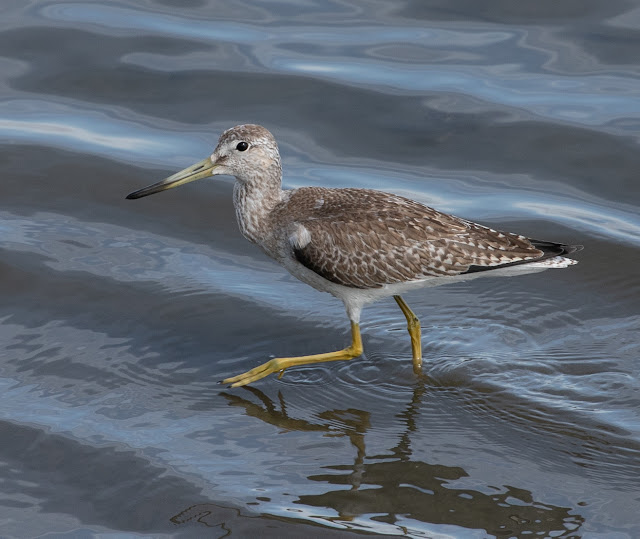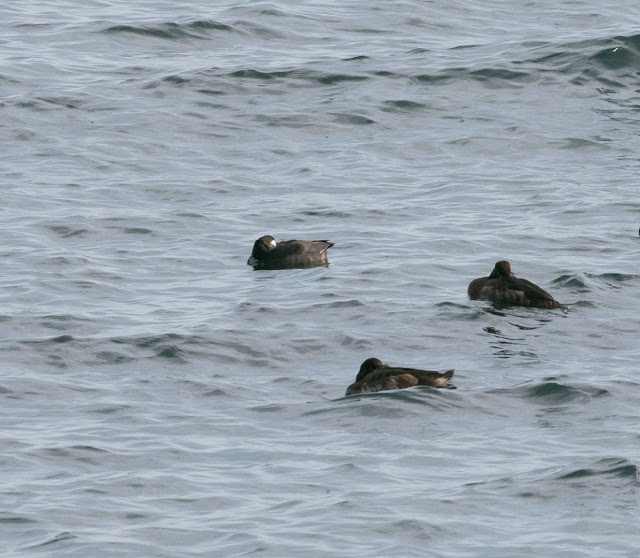I saw my first ever Nordmann's Greenshank on Ko Libong in Thailand... and of course Crab Plover! Ko Libong was the place to go at the time if you wanted to see Nordmann's, the only known wintering site, as well as the only east Asian location for Crab Plover.
There had been zero development on the island at that time, no tourists, no accommodation. The late Russell Slack and I took the long-boat from the mainland with locals and livestock. On arrival we met the island's chemist who welcomed us to sleep on the floor of his shop for the duration of our stay; we were also welcome to eat meals with the family but were asked for a small contribution to the cost. Apart from the chemist no one spoke a word of English, except for "Nordmann's Greenshank" which seemed to be the universal greeting to any visitor. Presumably the only visitors to this island were birders and the locals had probably never met a foreigner who wasn't carrying binoculars. We also visited the island's 'cinema', one evening a large white sheet was tied between trees, the generator cranked-up a video played to the assembled islanders sitting on the ground to watch; from the visitors perspective this seemed communal event and whichever video had been brought over from the mainland probably didn't matter. This was a world away from the Thailand most tourists would have seen.
If the Crab Plovers were were easy to spot and identify, the Nordmann's were not. Basically, we didn't really know much about separating them from Common Greenshank, I'd never seen a photograph of one, and we were playing it by ear. What a difference the internet makes!!!
King et al. (Birds of South East Asia), was the standard reference for travelling birders, and was pretty much on the money:-
"Very much like Common Greenshank and must be separated with care by somewhat stouter bill, with yellowish basal half; ...paler upperparts in winter; paler dark barring on tail; unmarked white axilliaries and wing lining; shorter and often yellower legs, giving a different appearance when feeding..."
Nevertheless, we weren't carrying scopes on what was, for me, a four-month-trip, so with bins only it wasn't easy. Not only was there no internet in those days, digital photography didn't exist either, so there was no checking images later, everything was sketches and notes. I don't think birding is any more or less exciting nowadays but it's certainly much easier. Plus, fine details of moult, features only apparent in flight and so on, make photography an amazing learning tool, sketches could only show details actually seen in the field.
Of the 'big three' in Japan, Asian Dowitcher, Nordmann's Greenshank and Spoon-billed Sandpiper, I had to wait by far the longest for Nordmann's. In fact, I had to make the trip to Saga, Kyushu, to finally see this species, but as it turns up in Kyushu at the same time as Chinese Sparrowhawk, it makes for an enjoyable birding trip. Tidal sites are tricky and if you hit Daijugarami at the wrong time it can be a very frustrating place. Even at high tide you aren't guaranteed good views.
 |
| Spot the Nordmann's; this one isn't nearly as distant as they can be. |
 |
| ...unless they are also just sitting on the beach. |
 |
| Surprisingly little plastic along the tideline, far more pleasing to the eye than is too often the case. |
 |
| Quite a few juvenile mantle and scapular feathers already replaced. |
 |
| Bottom left with Great Knot. |













































